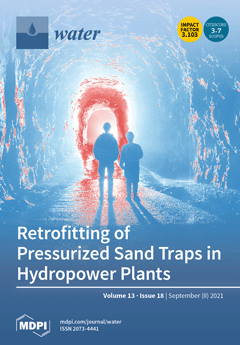Low water use efficiency and soil salinization are two main factors limiting cotton production in southern Xinjiang. A field experiment was conducted to investigate the effects of brackish water irrigation levels on cotton growth, yield and soil water–salt dynamics in southern Xinjiang, so as to provide a theoretical and experimental basis for the development and utilization of brackish water. There were three irrigation levels: W
1 (75 mm + 80%ET
c), W
2 (150 mm + 80%ET
c) and W
3 (240 mm + 80%ET
c) at the seeding stage (S
1), seeding stage + budding stage (S
2) and seeding stage + budding stage + flowering stage (S
3), with an irrigation amount of 450 mm during spring as the CK (the local reference level) (10 treatments in total). The salt of the local brackish water used was 3 g·L
−1. Film-mulched drip irrigation experiments were conducted to observe cotton growth, aboveground dry matter, cotton yield, soil water and salt distribution, as well as other indicators. The results showed that the irrigation applications of S
3 can improve the soil moisture and salt distribution of the root zone. The salt accumulation at the harvest stage of W
3S
3 was reduced by 39.5% and 2.8% compared with W
3S
1 and W
3S
2, respectively. More frequent irrigation applications can reduce a soil’s total dissolved solids (TDS), avoid exceeding the salt tolerance threshold of 4.8 g kg
−1 and lead to higher aboveground dry matter and cotton yields. W
3S
3 obtained the highest yield of 5685 kg ha
−1, which was increased by 39.59%, 7.85% and 11.25% compared with W
3S
1, W
3S
2 and CK, respectively. The higher the irrigation amount, the less water use efficiency (WUE), following the order of S
3 > S
2 > S
1 > CK at various growth stages. W
3S
1 obtained the lowest WUE of 0.64 kg·m
−3. Comprehensively considering the effects of soil moisture retention and salt suppression, cotton growth, yield and water use efficiency, an irrigation amount of 240 mm brackish water at three growth stages, with 80%ET
c for irrigation, is recommended for the sustainable production of cotton in southern Xinjiang.
Full article





